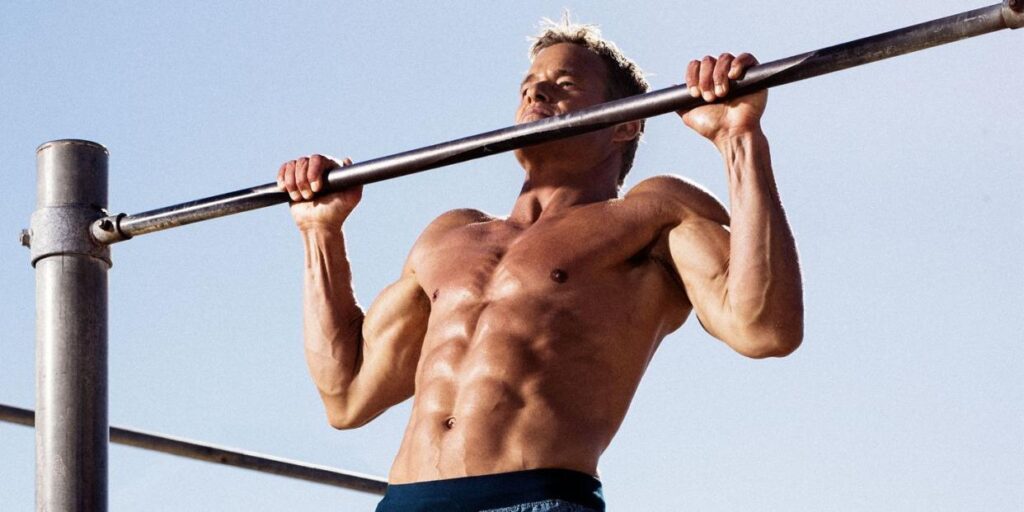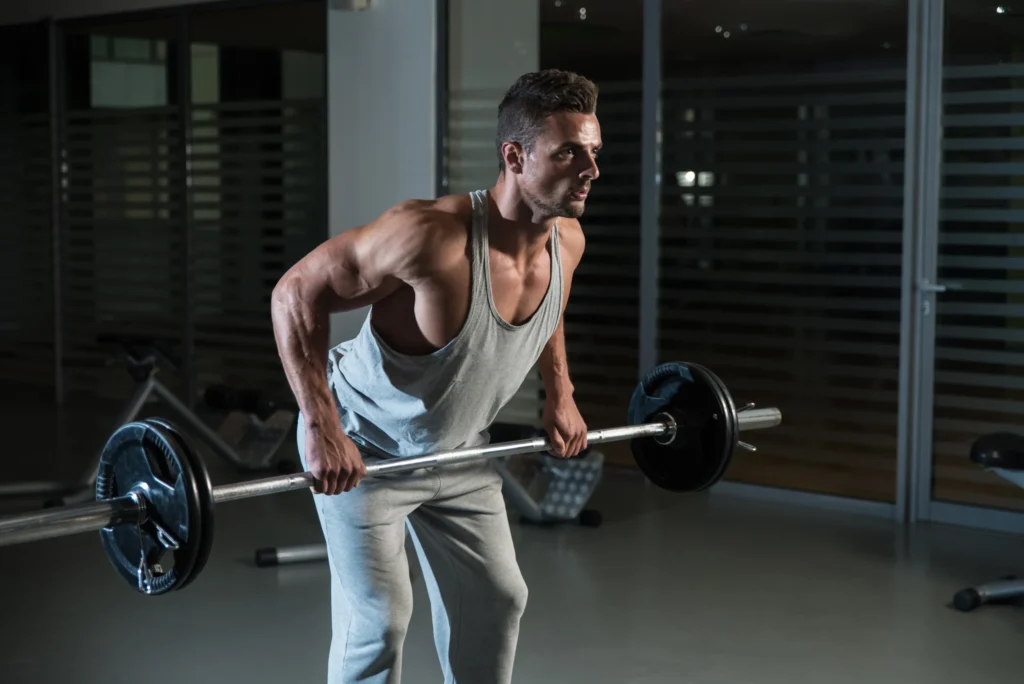A strong, well-developed back isn’t just about aesthetics – it’s fundamental to overall strength, posture, and athletic performance. Whether you’re looking to achieve that coveted V-taper or simply want to build functional strength, this comprehensive guide will walk you through the most effective back exercises for muscle growth and development.

Understanding Back Anatomy and Why It Matters
Before diving into the exercises, it’s crucial to understand the major muscles we’ll be targeting:
The back is a complex network of muscles, including the latissimus dorsi (lats), rhomboids, trapezius (traps), and erector spinae. Each muscle plays a vital role in movement and posture, and targeting them effectively requires a variety of exercises and angles.
The Best Back Exercises for Muscle Growth
1. Pull-Ups: The King of Back Exercises
Pull-ups remain unmatched for developing upper body strength and back width. This compound movement engages multiple muscle groups simultaneously, making it incredibly efficient for building mass.
Key form tips:
- Start with a full hang
- Pull your chest to the bar
- Focus on squeezing your lats
- Control the descent

2. Barbell Rows: Building Thickness and Power
The barbell row is fundamental for developing back thickness and overall strength. This movement allows you to handle heavy weights while maintaining control.
Form essentials:
- Hinge at the hips
- Keep your spine neutral
- Pull the bar to your lower chest
- Squeeze your shoulder blades together

3. Lat Pulldowns: Mastering Width Development
While pull-ups are ideal, lat pulldowns offer excellent control and variability, especially for beginners or those working on form.
Technique focus:
- Maintain an upright posture
- Pull the bar to your upper chest
- Keep your core engaged
- Control the weight throughout
4. Seated Cable Rows: Targeting Mid-Back Development
Cable rows are excellent for developing the middle back while maintaining constant tension throughout the movement.
Key points:
- Sit with proper posture
- Drive your elbows back
- Squeeze your shoulder blades
- Maintain controlled movement

5. Deadlifts: The Ultimate Back Builder
While technically a full-body exercise, deadlifts are incredible for lower back development and overall strength. Before going at it make sure you know how to do it with proper form.
Safety first:
- Start with proper form
- Keep the bar close to your body
- Maintain a neutral spine
- Drive through your legs
Programming Your Back Workout
For optimal results, structure your back training with these guidelines:
Frequency
Train your back 2-3 times per week, allowing adequate recovery between sessions.
Volume
- Beginners: 8-10 sets per week
- Intermediate: 12-15 sets per week
- Advanced: 15-20 sets per week
Exercise Selection
Each workout should include:
- A vertical pulling movement (pull-ups or pulldowns)
- A horizontal pulling movement (rows)
- A compound movement (deadlifts or heavy rows)

Common Mistakes to Avoid
- Using Too Much Weight Focus on form over weight. Many lifters sacrifice technique for heavier loads, reducing effectiveness and increasing injury risk.
- Insufficient Range of Motion Complete each repetition through a full range of motion to maximize muscle engagement and growth potential.
- Neglecting Mind-Muscle Connection Focus on feeling your back muscles work during each exercise. This consciousness improves muscle activation and results.
Progressive Overload Strategies
To continue seeing results, implement these progression techniques:
- Gradual Weight Increases Add weight when you can complete all sets with perfect form.
- Volume Manipulation Increase sets or reps before adding weight.
- Tempo Changes Experiment with slower negatives or pause reps.
Recovery and Nutrition Tips
Recovery Essentials
- Get adequate sleep (7-9 hours)
- Stay hydrated
- Maintain proper protein intake
- Consider post-workout nutrition
Nutrition Guidelines
- Consume 1.6-2.2g of protein per kg of body weight
- Maintain adequate caloric intake
- Focus on whole foods
- Time meals around workouts
Common Back Training Myths Debunked
The world of back training is filled with misconceptions that can lead lifters astray from their goals. Let’s break down some of the most persistent myths and replace them with evidence-based facts that will help optimize your training.
Myth 1: Heavy Weights Are Everything
Many believe that lifting the heaviest possible weights is the only path to a powerful back. While progressive overload is crucial, form and mind-muscle connection often matter more than sheer weight. Starting with lighter weights to perfect your technique can lead to better muscle activation and, ultimately, superior results.
Myth 2: Deadlifts Are Dangerous
The deadlift often gets labeled as a dangerous exercise that should be avoided. However, when performed with proper form and appropriate progression, deadlifts are one of the most effective exercises for strengthening your entire posterior chain, including your back muscles. The key lies in proper technique and gradual progression.

Myth 3: Lifting Straps Are Cheating
Many gym purists argue that using straps is “cheating.” In reality, straps can be valuable tools that allow you to focus on back engagement without grip strength becoming a limiting factor. While grip strength is important, it shouldn’t be the weakness that prevents you from properly training your back muscles.
Myth 4: Wide Grip Equals Wide Lats
There’s a persistent belief that using an extra-wide grip for pull-ups and rows is necessary to build width in your lats. Research shows that grip width is less important than range of motion and proper muscle activation. Focus on feeling the stretch and contraction in your lats rather than obsessing over grip width.
Myth 5: Upper Back Training Alone Fixes Posture
While strengthening your back is crucial for posture improvement, it’s only part of the solution. Good posture requires:
- Core strength development
- Chest and anterior shoulder flexibility
- Hip flexor mobility
- Daily posture awareness
- Ergonomic considerations in your environment
Myth 6: Back Training Requires Complex Equipment
Some believe that building a strong back requires access to specialized gym equipment. While certain machines can be helpful, you can build impressive back strength and size with basic equipment like pull-up bars, dumbbells, and resistance bands. The key is understanding how to properly activate your back muscles regardless of the tools available.
Understanding these myths and their corrections can help you make more informed training decisions and achieve better results in your back development journey. Remember that individual anatomy and mobility can influence exercise selection and form, so it’s essential to find what works best for your body while maintaining proper technique and progressive overload principles.
This knowledge, combined with the exercises and techniques discussed earlier, will help you build a stronger, more aesthetic back while avoiding common pitfalls that might hinder your progress.
It WILL be Worth it
Building a strong, aesthetic back requires consistency, proper form, and progressive overload. Focus on mastering these fundamental exercises while gradually increasing intensity. Remember, everyone’s journey is different – listen to your body and adjust accordingly.
For more training tips and workout routines, check out our guides on best workout splits and how to grow bigger arms. Don’t forget to follow our social media accounts for daily motivation and training advice!